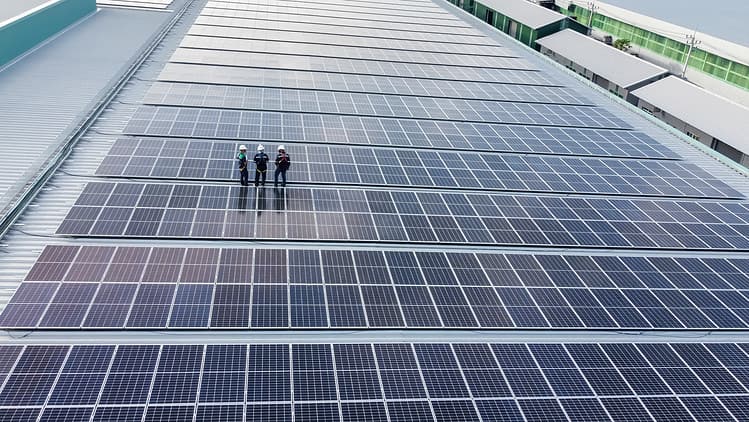
We’ve seen remarkable progress in clean energy in recent years. New data finds that 2022 was the first year when global investment in the world’s transition to clean energy matched investment in fossil fuels.
It’s proof that powerful climate tools today — like solar and wind power, battery storage, and zero-emission transportation — are gaining momentum and can ramp up even faster.
But in our journey to stabilize our climate, we also face challenges for which we don’t have all the answers today. To achieve our global climate goals and secure the strongest possible future, studies by climate scientists find that we’ll need new solutions that aren’t ready for the market — yet.
This is where climate innovation comes in. Climate innovation is creating, testing and scaling up new climate solutions.
Key industries that need climate innovation
Climate innovation can take many forms, ranging from technologies to policy approaches. And many areas of our economy need climate innovation.
Let’s start with an example right under your feet: concrete.
Concrete is responsible for as much greenhouse gas pollution as all passenger vehicles worldwide. It takes a lot of energy to make concrete, which usually comes from fossil fuels that heat limestone and clay to more than 1,000 degrees Celsius. The resulting chemical reaction releases carbon dioxide, producing even more climate pollution.
And concrete production isn’t the only economy sector lacking available climate solutions. Other challenging areas include:
- Manufacturing of many industrial products, like steel and chemicals.
- Fuels for airplanes and shipping.
- Methane pollution from agriculture (methane is a potent greenhouse gas).
We need to develop solutions for all these problem areas and find ways to cut or remove climate pollution from the atmosphere.
How climate innovation happens: 3 vital steps
We can solve challenges in the toughest areas through the climate innovation process. Here’s how the process might work for concrete:
1. Research and development: There are some exciting engineering ideas right now that can make concrete more climate-friendly, such as using greener alternatives like timbercrete, which reuses waste from timber along with other materials, or trapping carbon dioxide in concrete as it dries, which makes concrete mixtures stronger, reducing the amount of material required for projects.
2. Testing solutions: Once we have developed a series of possible solutions, we need to explore how they would work on the ground: What kinds of jobs would they create? And would they produce any harmful pollution? Does a solution have unintended impacts, and is it better than the alternatives? New solutions are often tested in “demonstration” or “pilot” projects, completed in partnership with communities, to ensure they deliver economic, health and climate benefits.
3. Scaling solutions up on the market: Finally, we need to make sure good solutions spread, for example, by creating ways to distinguish clean concrete from the dirty kind and ensuring that there are buyers for the better kind.
Driving climate innovation further, faster
We’ve leveraged this innovation process with the power of governments, the private sector and communities — and we’ll need to do more.
Low-cost solar, wind and battery technologies would not be where they are today without government investment and supportive policies that pushed breakthroughs and created new demand.
We’ll need supportive government policies at every step of the innovation process to bring new solutions to the forefront safely and equitably. In the U.S., recent investments from historic climate laws offer an unprecedented opportunity to test emerging technologies that could address pollution from industry.
The private sector also has a lot of potentials to ramp up new solutions across industries and supply chains. A recent report found that more than a quarter of all venture capital funding is invested in climate technology.
And critically, communities that have a stake in these solutions need to be involved in the innovation process so that new technologies benefit everyone.
Creating the next generation of solutions through climate innovation will require time, resources and a willingness to take some chances. But deploying the current climate solutions and creating a more powerful toolkit for tomorrow gives us the best chance to build a vital Earth for everyone.
Act when it matters most.
Every day more than 60 people sign up for news and alerts to find out when their support helps most. Will you join them? (Read our privacy statement.)




